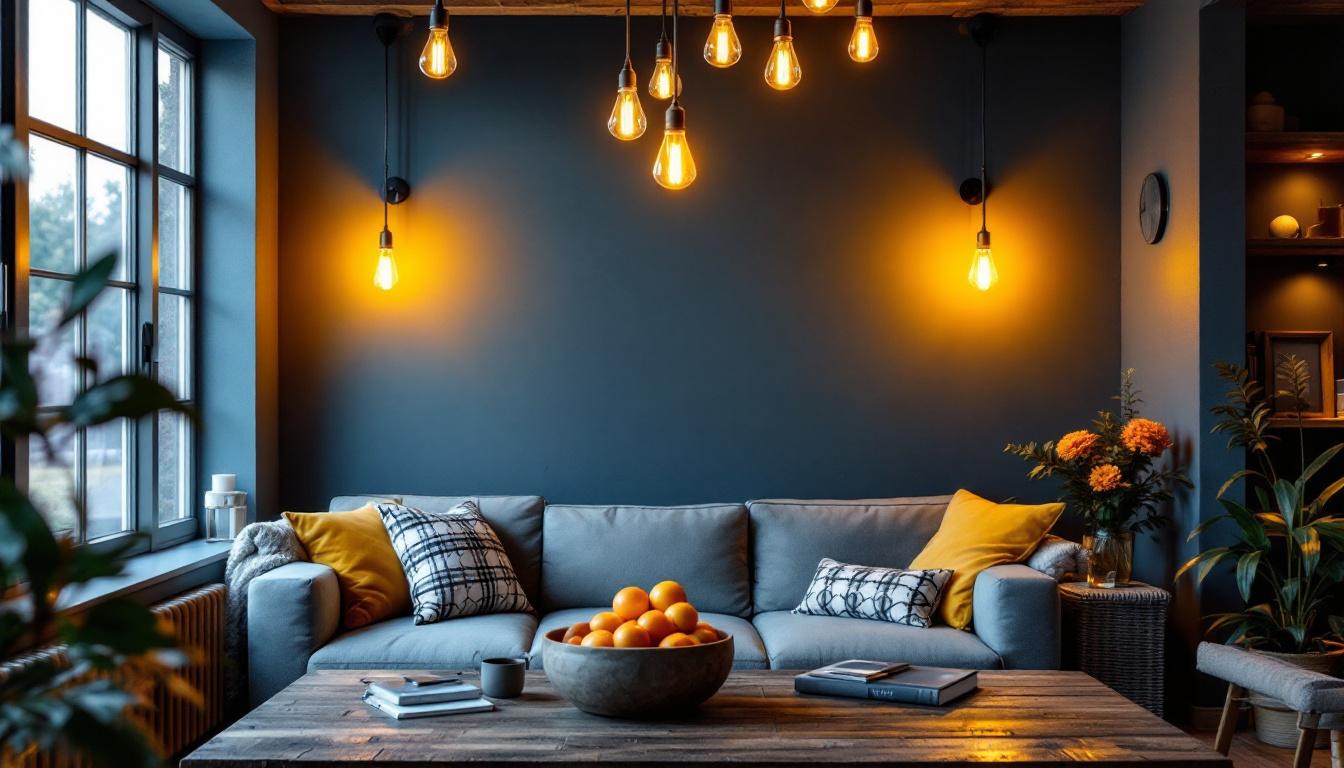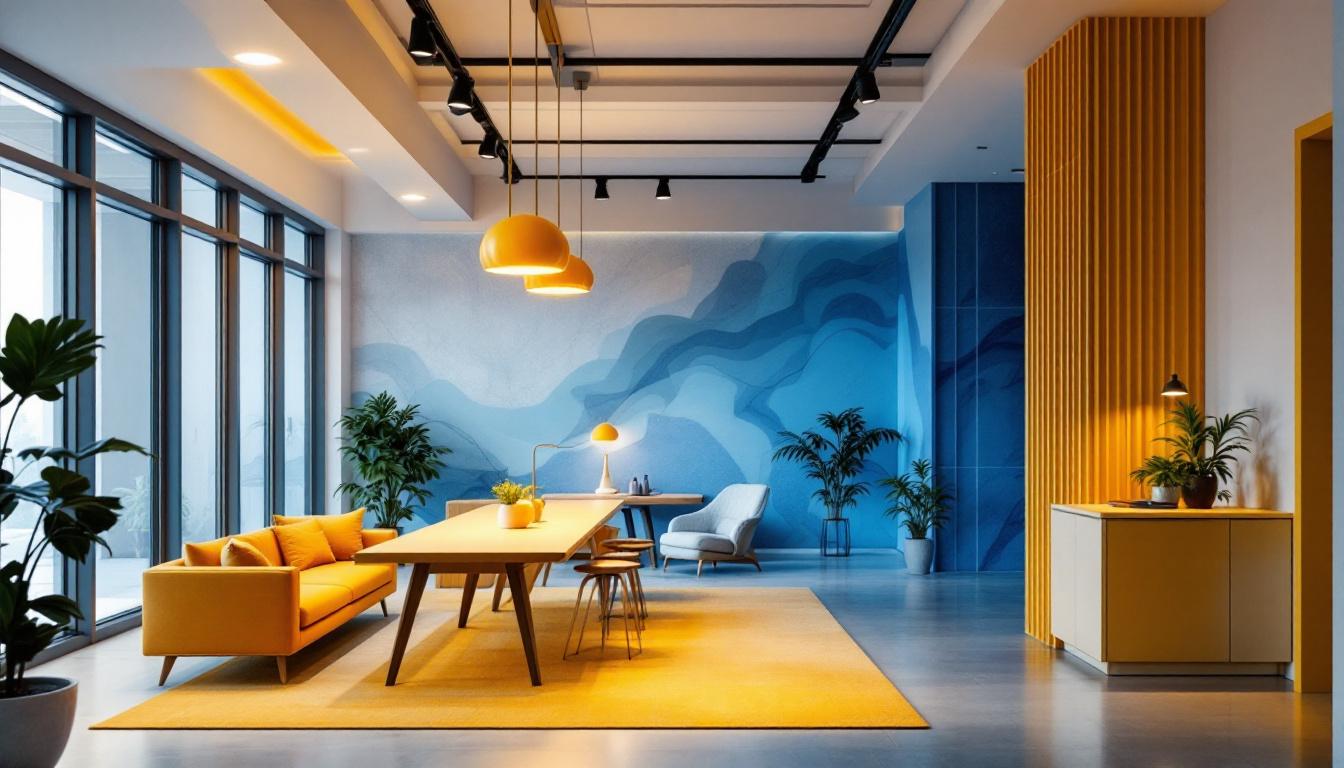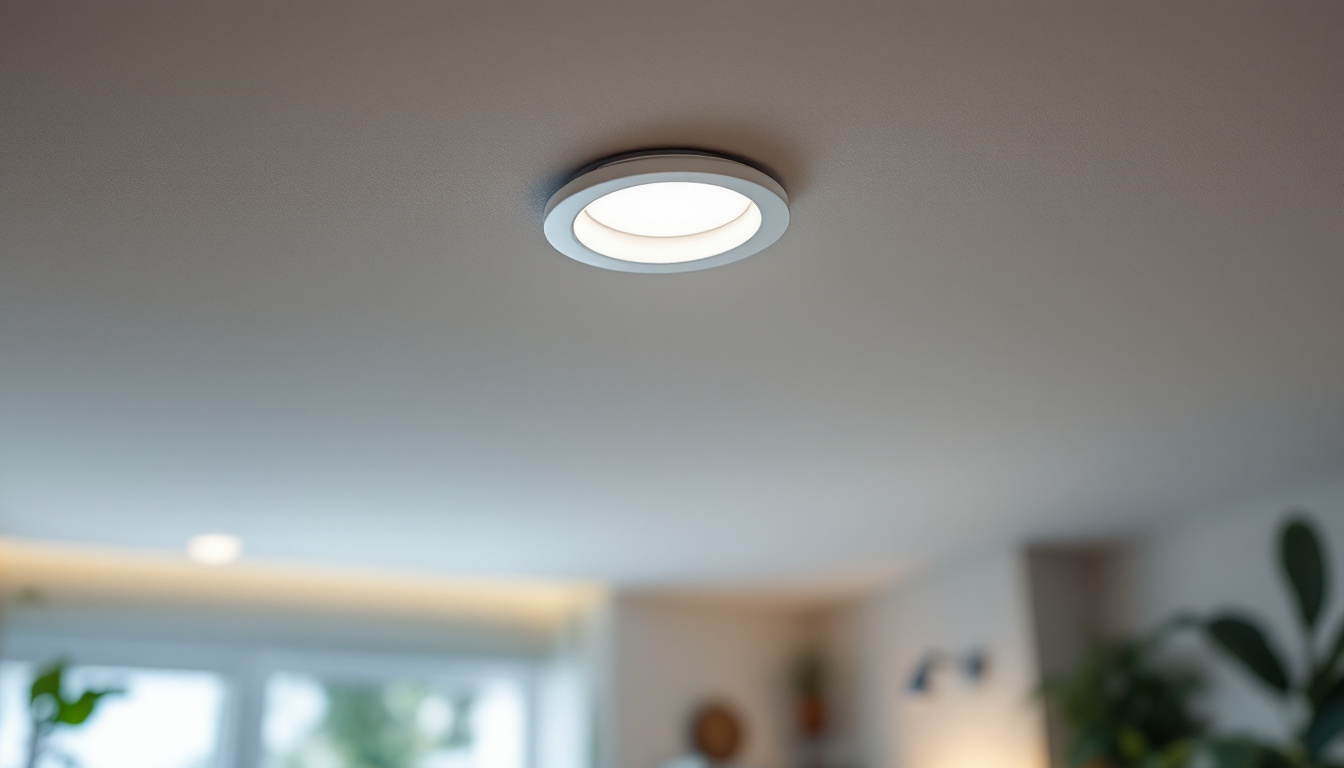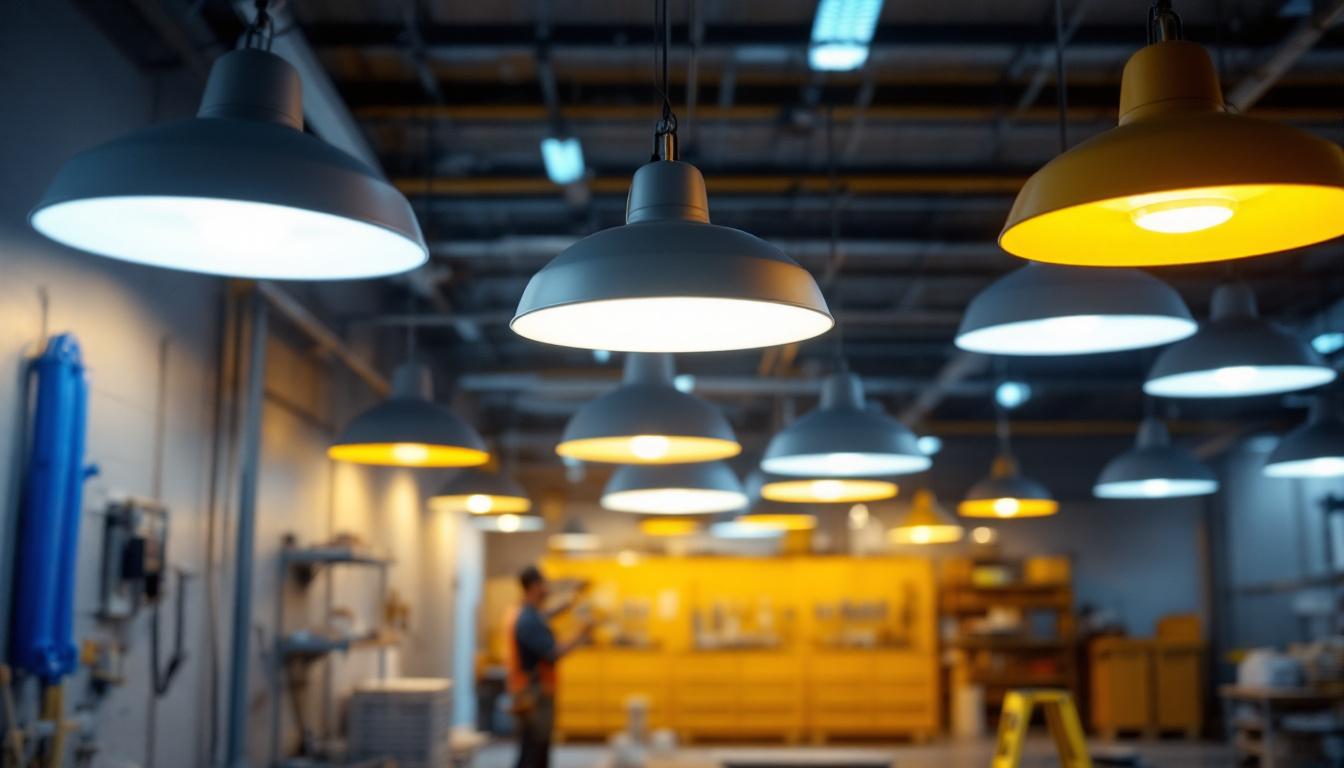
Interior barn lights have become increasingly popular in both residential and commercial spaces, providing a unique blend of rustic charm and modern functionality. For lighting contractors, understanding the science behind these fixtures is essential for effective installation and optimal performance. This article delves into the various aspects of interior barn lights, including their design, functionality, and the underlying principles of lighting that can help contractors make informed decisions.
One of the primary reasons for the popularity of barn lights is their aesthetic appeal. These fixtures often evoke a sense of nostalgia, reminiscent of the rural landscapes and agricultural settings they originated from. However, their design is not merely for show; it also serves practical purposes that enhance the overall lighting experience.
Barn lights typically feature a wide, open shade that directs light downward, making them ideal for illuminating large areas. The materials used in their construction, such as metal, glass, or even wood, contribute to their rustic charm while ensuring durability. The color and finish of these fixtures can also vary, allowing for customization to suit different interior styles, from modern to traditional. Many barn lights come in a range of finishes, from classic galvanized steel to vibrant colors that can add a pop of personality to a space. This variety not only enhances their visual appeal but also allows homeowners and designers to create unique atmospheres tailored to their specific tastes.
Interior barn lights are not limited to agricultural settings; they can be effectively used in various environments, including kitchens, dining areas, and even commercial spaces like cafes and boutiques. Their versatility lies in their ability to blend seamlessly with different design themes while providing adequate illumination. For instance, in a modern kitchen, a row of sleek barn lights can serve as both functional task lighting and a striking design element above an island. In contrast, in a rustic farmhouse setting, larger, more traditional barn lights can enhance the cozy, inviting atmosphere. Additionally, the adjustable nature of many barn light designs allows for directional lighting, making them perfect for highlighting artwork or architectural features within a space.
For lighting contractors, understanding light quality and color temperature is crucial when selecting and installing barn lights. The quality of light can significantly impact the ambiance of a space, influencing how colors appear and how comfortable occupants feel. Proper lighting can enhance the functionality of a barn, whether it’s used for agricultural purposes, events, or storage, ensuring that every corner is illuminated effectively while maintaining a welcoming atmosphere.
Color temperature, measured in Kelvin (K), describes the hue of a light source. Barn lights are available in various color temperatures, ranging from warm white (around 2700K) to cool white (above 5000K). Warm white light creates a cozy atmosphere, making it suitable for residential settings, while cool white light is often preferred in commercial environments for its crisp and clean appearance. Additionally, there are daylight bulbs, typically around 5000K to 6500K, which mimic natural daylight and are ideal for tasks requiring high visibility, such as detailed work or crafting. Understanding these distinctions allows contractors to tailor their lighting solutions to meet the specific needs of each space.
The quality of light refers to its ability to render colors accurately and provide adequate visibility. High-quality light sources, such as LED barn lights, offer excellent color rendering index (CRI) ratings, ensuring that colors appear true to life. This is particularly important in spaces where color accuracy is essential, such as art studios or retail environments. Moreover, the distribution of light plays a significant role in creating an inviting atmosphere. Well-designed barn lights can minimize harsh shadows and provide uniform illumination, enhancing both safety and aesthetic appeal. In addition, the longevity and energy efficiency of modern lighting solutions contribute to lower operational costs, making them an attractive choice for barn owners looking to optimize their lighting systems.
As energy efficiency becomes increasingly important in the lighting industry, barn lights have evolved to meet these demands. Lighting contractors must be aware of the energy-saving options available to their clients, ensuring that they choose fixtures that align with sustainability goals. The shift towards energy-efficient lighting is not just a trend; it reflects a broader commitment to reducing energy consumption and promoting environmental stewardship across various sectors.
LED barn lights are a popular choice due to their energy efficiency and long lifespan. Compared to traditional incandescent bulbs, LEDs consume significantly less energy and can last up to 25 times longer. This not only reduces energy costs but also minimizes the frequency of replacements, making them a cost-effective solution in the long run. Furthermore, advancements in LED technology have led to the development of smart lighting systems that allow for remote control and automation, enabling users to optimize their energy usage even further. By integrating these smart features, contractors can offer clients a modern solution that enhances convenience and efficiency.
In addition to energy savings, using LED barn lights contributes to environmental sustainability. LEDs produce less heat and contain no harmful substances, making them safer for both the environment and human health. By promoting the use of energy-efficient lighting solutions, contractors can help their clients reduce their carbon footprint. Moreover, the manufacturing process of LEDs has become increasingly eco-friendly, with many companies adopting sustainable practices to minimize waste and energy consumption during production. This holistic approach not only benefits the environment but also aligns with the values of consumers who are becoming more conscious of their purchasing decisions.
Moreover, the shift to energy-efficient lighting goes hand in hand with the growing trend of renewable energy sources. Many barn owners are now considering solar-powered LED lights, which harness sunlight to provide illumination without drawing from the grid. This not only enhances energy independence but also further reduces reliance on fossil fuels, contributing to a more sustainable future. As awareness of these options increases, lighting contractors have a unique opportunity to educate their clients about the benefits of integrating renewable energy solutions into their lighting designs, fostering a culture of sustainability that extends beyond mere compliance with regulations.
Proper installation is crucial for maximizing the performance of barn lights. Lighting contractors should consider various factors during the installation process to ensure optimal functionality and safety.
The height at which barn lights are installed can significantly affect their performance. Ideally, these fixtures should be hung at a height that allows for even distribution of light while minimizing glare. In spaces with high ceilings, adjustable or pendant-style barn lights can be used to achieve the desired effect.
When installing barn lights, contractors must also pay attention to wiring and electrical requirements. Ensuring that the electrical system can handle the load of the fixtures is essential for safety and functionality. Additionally, using dimmer switches can provide flexibility in controlling light levels, enhancing the overall user experience.
As technology continues to advance, the integration of smart features into barn lights has become increasingly common. Lighting contractors should be familiar with these technologies to offer clients modern solutions that enhance convenience and efficiency.
Smart bulbs can be easily integrated into barn light fixtures, allowing users to control their lighting remotely via smartphones or smart home systems. This capability enables users to adjust brightness, set schedules, and even change color temperatures to suit their needs. For contractors, understanding the compatibility of smart bulbs with various fixtures is essential for successful installations.
Many smart lighting systems come equipped with energy monitoring features, providing users with insights into their energy consumption. This data can help clients make informed decisions about their lighting usage and identify opportunities for further energy savings. Additionally, automation features can enhance convenience, allowing lights to be programmed to turn on or off based on occupancy or time of day.
To ensure the longevity and optimal performance of barn lights, regular maintenance is necessary. Lighting contractors should educate their clients on proper care and maintenance practices to extend the lifespan of their fixtures.
Dust and debris can accumulate on barn lights over time, affecting their performance and appearance. Regular cleaning is essential to maintain optimal light output and aesthetic appeal. Contractors can provide clients with guidelines on how to clean their fixtures safely, ensuring that they remain in excellent condition.
Conducting regular inspections of barn lights can help identify potential issues before they become significant problems. Checking for loose connections, signs of wear, and proper functionality will ensure that the lighting remains safe and effective. Contractors can offer maintenance services or recommend schedules for inspections to their clients.
The evolution of interior barn lights reflects broader trends in design, technology, and sustainability. For lighting contractors, staying informed about these developments is essential for providing clients with the best solutions to meet their needs. By understanding the science behind barn lights, contractors can enhance their expertise and offer valuable insights to their clients, ensuring successful installations and satisfied customers.
As the demand for unique and functional lighting solutions continues to grow, interior barn lights will undoubtedly remain a popular choice. By embracing innovation, focusing on energy efficiency, and prioritizing quality, lighting contractors can position themselves as leaders in this dynamic industry.
Ready to elevate your lighting game with the rustic charm and modern efficiency of interior barn lights? Look no further than LumenWholesale, where we specialize in providing lighting contractors with the highest quality, spec-grade lighting products at unbeatable wholesale prices. Say goodbye to inflated markups and hello to a vast selection of reliable lighting that meets the highest industry standards. Plus, enjoy the convenience of bulk buying with free shipping, ensuring you get the premium lighting you need at the best value — without any hidden fees. Don’t compromise on quality or affordability; choose LumenWholesale for your next project. Wholesale Lighting at the Best Value is just a click away.

Discover the ultimate guide for lighting contractors on maximizing efficiency with 17W LED bulbs.

Discover how Keystone Products is revolutionizing the lighting industry with innovative designs and seamless installation solutions.

Discover how LED replacements for recessed lights are revolutionizing the lighting industry.

Discover everything lighting contractors need to know about UFO LED shop lights in this comprehensive guide.